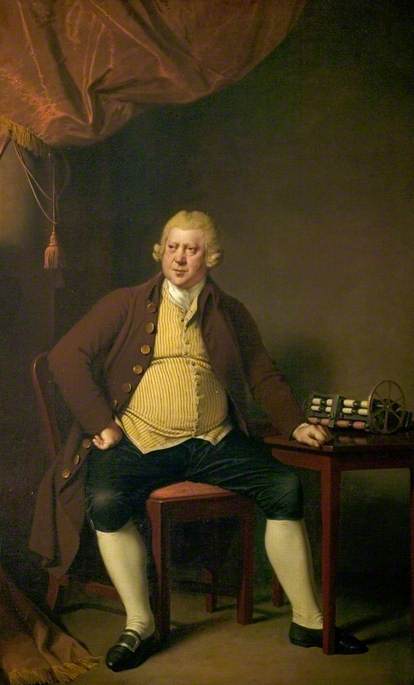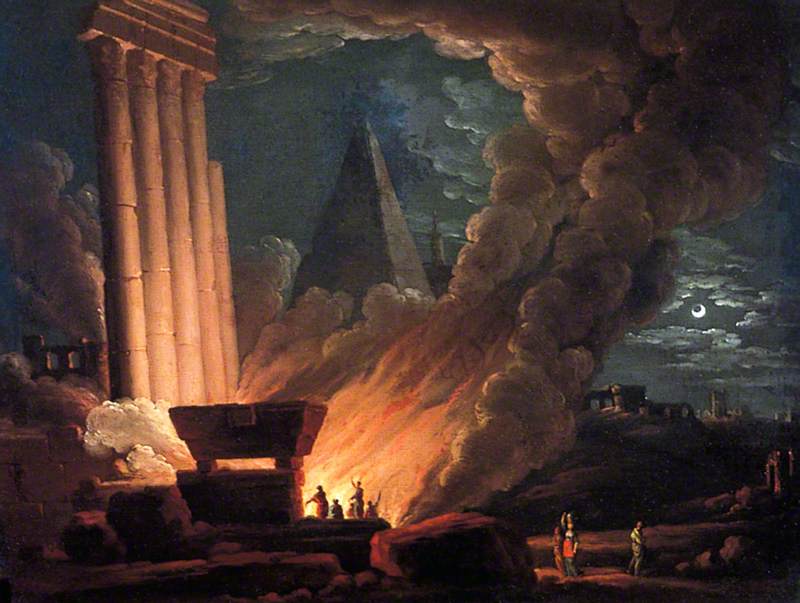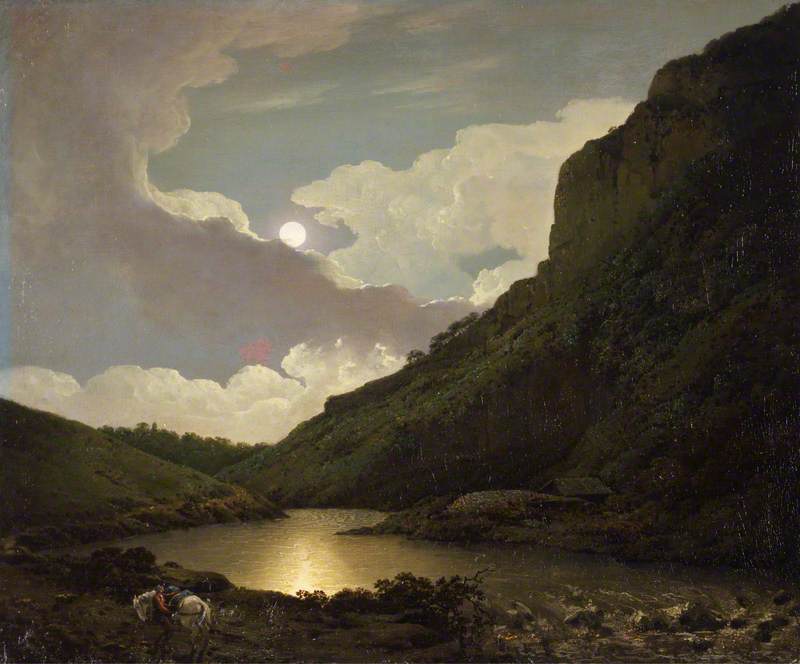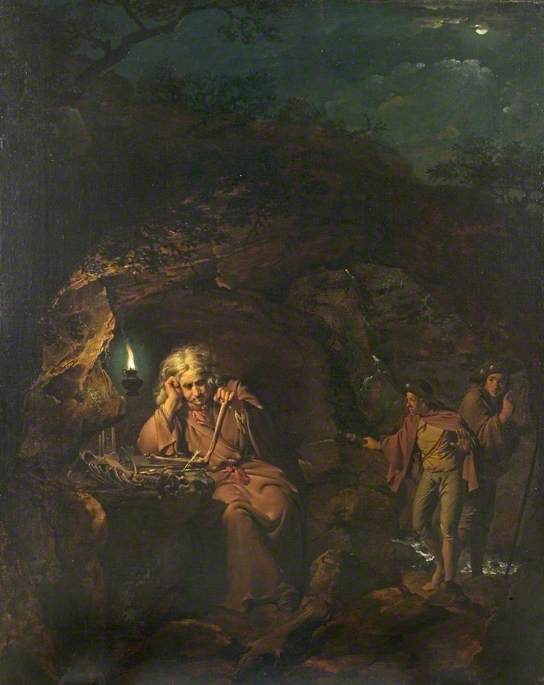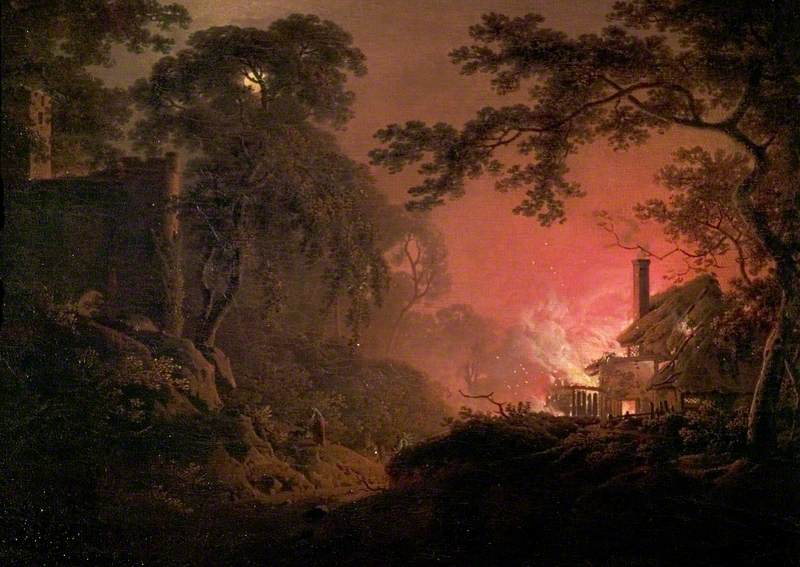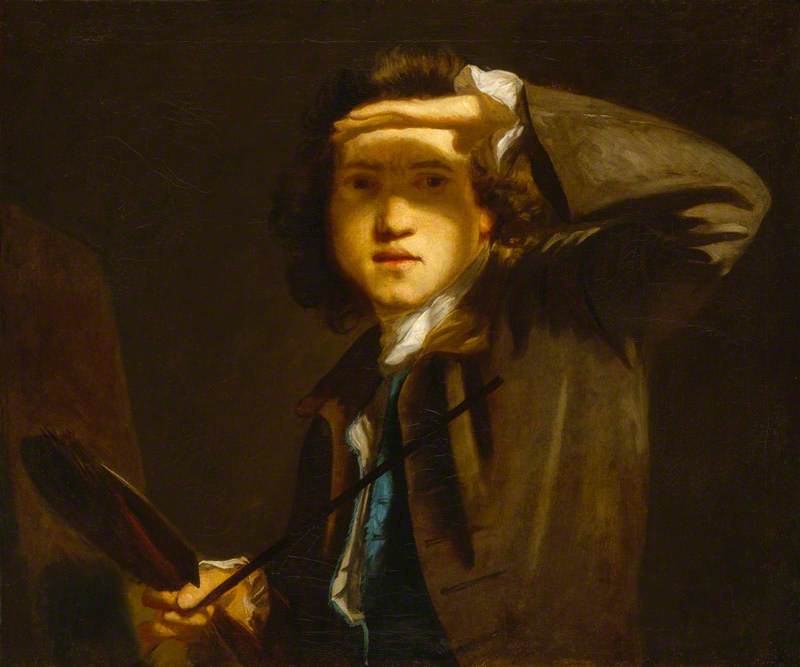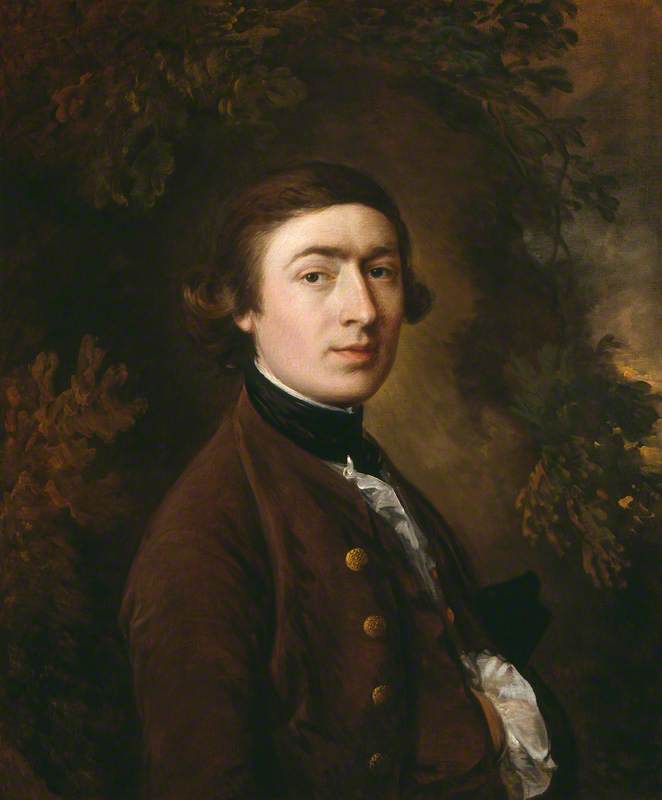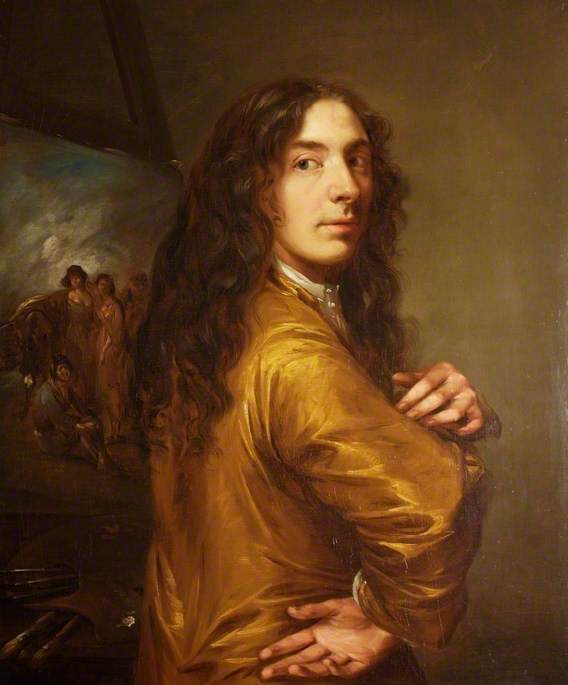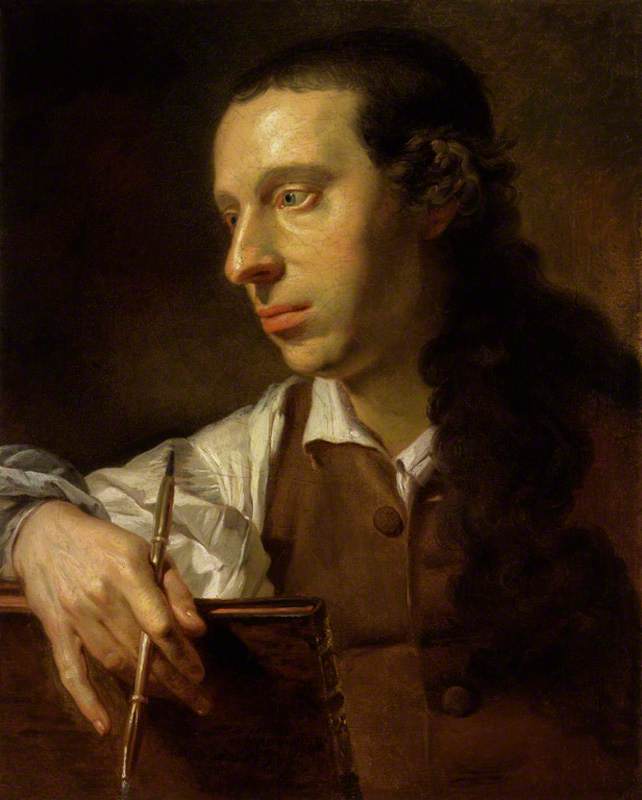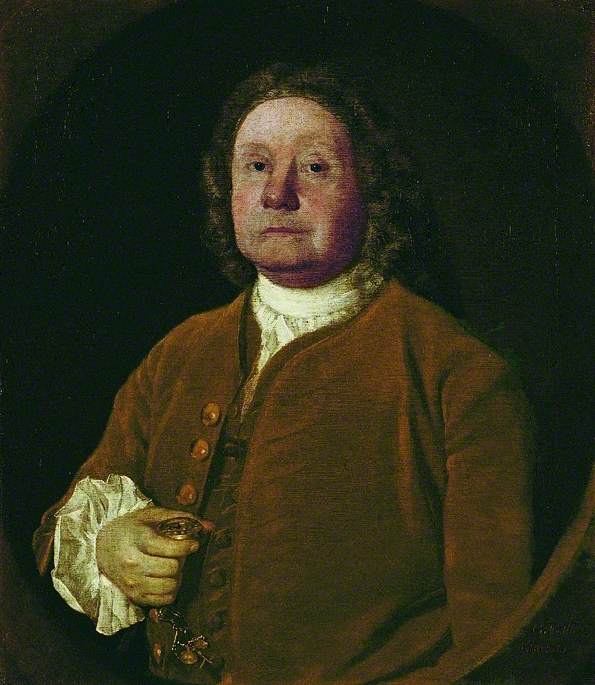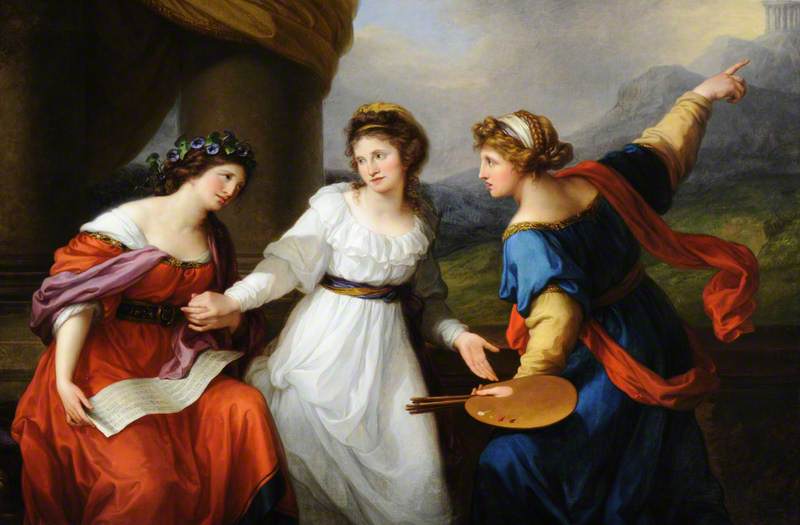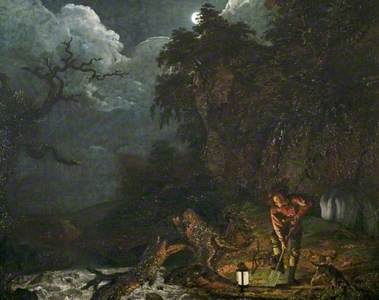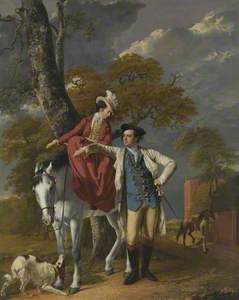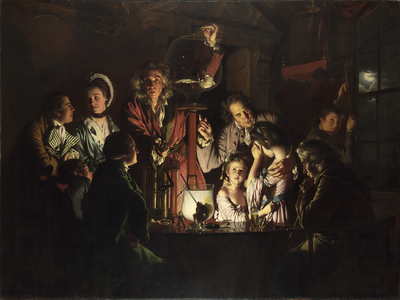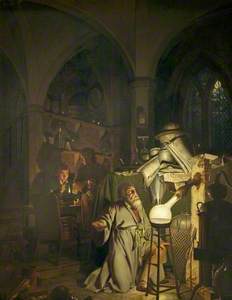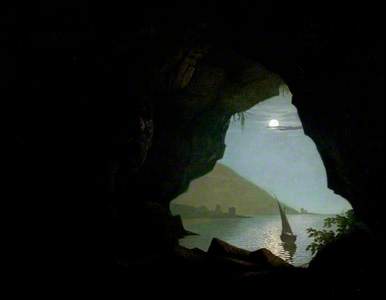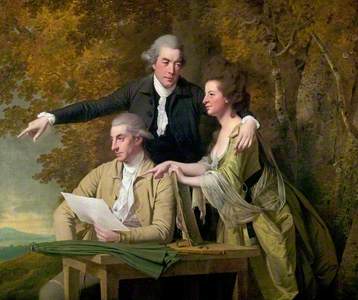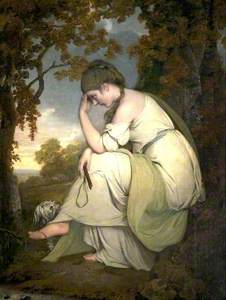In a brief 'Essay on Painting', first published in 1776, the aspiring man of letters John Hope praised the artist Joseph Wright of Derby (1734–1797) for his 'variety', observing:
'Take his famous Blacksmith's Shop, one of his candle-light pieces, and one of his landskips; place them together in one room, and I defy any man to say, that, by the colouring, he could discern them to be the productions of the same hand.'
Wright's variety was commonly commented on by critics. Working at a time when artists were looking to cultivate a discrete, individual artistic sensibility, usually founded on their work in a particular genre, Wright's 'uncommon genius' (as one reviewer had it) lay, paradoxically, in his versatility.
Contemporaries were not only concerned with his varied subject matter; for another writer of the day, Robert Simpson, it resided every bit as much in his 'accuracy of discrimination', that is, the painter's uncanny ability to capture the rich shimmering textures of the everyday. In Wright's art, the scrutiny of what usually goes unnoticed prompts deeper reflection.
His famous images of manufacturing and 'scientific' demonstrations have often led to Wright being closely identified with the expansion of industry in the eighteenth-century Midlands, as well as the rational tendencies associated with 'the age of Enlightenment'. Yet, the artist's works dealing with such themes are small in number and painted within a relatively short timeframe.
Emotive and touching subjects and the responses they elicit were a prominent aspect of his art, however. Indeed, Wright was a painter of feeling or (in eighteenth-century terms) sensibility, for whom everyday sights might prove profoundly moving. 'Nothing is little to him that feels it with great sensibility', remarked the writer Samuel Johnson.
Favouring nocturnal scenes illuminated by moonlight or flickering candlelight, Wright made drama out of the mundanity of a polite gathering or an elderly man digging.
The Captive
(from Laurence Sterne's 'A Sentimental Journey') c.1775–1777
Joseph Wright of Derby (1734–1797) 
But the painter's taste for heightened emotional states also led him to portray animals enduring torture, men in captivity, and young women suffering. He was a painter of darkness and light.
Two Girls Dressing a Kitten by Candlelight
c.1768–1770
Joseph Wright of Derby (1734–1797) 
Born in 1734, into a prosperous Derbyshire family, the young Wright's determination to become a painter was probably not looked upon favourably. Still, at age 17, he was allowed to begin studying under the fashionable London-based portrait painter Thomas Hudson. He eventually set up shop as a portrait painter in his native Derby – one of the centres of the Industrial Revolution – in the late 1750s.
Portraiture was central to the artist's practice right up until his death in 1797. A brief period in Liverpool aside – taking likenesses of the port city's affluent merchants – Wright's business was mostly located in and around the counties of the East Midlands.
His sitters included bluff, self-made men such as the cotton manufacturers Jedediah Strutt and Richard Arkwright, as well as elegant members of local landed society out riding or sketching on their estates.
Mr and Mrs Thomas Coltman
about 1770-2
Joseph Wright of Derby (1734–1797) 
Looking to extend his practice, Wright began sending works to London exhibitions in 1765, Three Persons Viewing the Gladiator by Candle-Light establishing Wright's reputation for novel subjects dramatically lit. Twelve months later, he was to follow up this striking image of the study of a drawing after a work of antique sculpture with a still more spectacular 'candlelight'.
A Philosopher Giving That Lecture on the Orrery in Which a Lamp is Put in Place of the Sun centres on a demonstration of astronomical knowledge. Seated around an Orrery – a mechanical model of the Solar System – a group of polite men, women and children display an array of emotional responses, from the calm and meditative air of the young man taking notes to the wonder of the children. On one level, it is a study of regional society. On another, it is a picture that ponders man's place in the universe.
A Philosopher Giving That Lecture on the Orrery in Which a Lamp Is Put in Place of the Sun
1764–1766
Joseph Wright of Derby (1734–1797) 
In 1768, Wright exhibited a further pictorial rumination on the everyday and the epic, a still larger and more spectacular scene of scientific demonstration, reflecting in this instance on matters of mortality. In his famous painting An Experiment on a Bird in the Air Pump, a natural philosopher lectures a fashionable audience on the necessity of air to life, by showing a white cockatoo struggling for breath in the partial vacuum of a glass bell jar. It is a pivotal moment in the experiment, with the demonstrator about to release the air back into the jar that will hopefully revive the bird.
An Experiment on a Bird in the Air Pump
1768
Joseph Wright of Derby (1734–1797) 
The drama is heightened by the theatrical lighting as well as by the spectators' varied responses – the indifference of some and the evident distress of the two girls at the centre of the picture. Children often take centre stage in Wright's subject pictures, looking out at and engaging the viewer – their natural, unaffected reactions contrasting with the variously impassive, measured, or else world-weary response of the adult world.
Heightened emotional states figure no less prominently in the series of nocturnal forge scenes Wright painted between 1771 and 1773. Makeshift shops and manufactories were established in ecclesiastical ruins, at sites such as Dale Abbey, a few miles east of Derby. In situating these scenes in the remnants of former churches, Wright presumably wanted to prompt some poetic thoughts on the toil of ordinary labourers or the passing of time.
Scenes of everyday modern life, these pictures treat the commonplace lives of regional folk with an unprecedented degree of seriousness. They celebrate the virtues of hard physical labour, if the perspective is admittedly that of someone looking down, perhaps – the work of the lower rural orders being something for wiser, better-educated (though probably less robust) men to meditate upon.
In An Iron Forge, the glow of a molten ingot bathes an affectionate family group in a warm light, their display of domestic affection including a tender exchange between a small child and an elderly man. The 'refined' viewer might muse on the frailties as well as the strengths of the people depicted.
Old men striking poses of melancholic reflection, such as the elderly figures in The Blacksmith's Shop and An Iron Forge, appear throughout Wright's art, as principal subjects as well as part of ensembles. A Philosopher by Lamplight (or a hermit) is an especially eccentric variation on this theme. In it, two pilgrims (identified by the shells pinned to their caps) approach a cave-dwelling hermit, who contemplates an assemblage of skeletal remains by lamplight.
Wright may have meant to make a comparison between pilgrimage and solitary reflection as alternative paths to spiritual enlightenment. But, in truth, the subject is obscure, and perhaps deliberately so. The painting's meaning is rendered still more opaque, for instance, by its curious spatial inconsistencies: the young men appearing oddly diminutive in scale next to the hermit and his pile of giant bones. It is possible the painter made an error, but the distortion does add to the disconcerting, irrational Gothic atmosphere.
Probably conceived as a companion piece to A Philosopher by Lamplight, The Alchymist, in Search of the Philosopher's Stone, Discovers Phosphorus, and prays for the successful Conclusion of his operation, as was the custom of the Ancient Chymical Astrologers is no less enigmatic.
While the lengthy but carefully worded title Wright attached to this picture explains its subject matter, it raises as many questions as it answers. It is not clear, for instance, whether Wright intended to dignify or mock the central figure, to demonstrate the accidental, at times, advance of knowledge or expose the folly of an old man whose greed blinds him to his own achievement. Age does not necessarily bring wisdom.
Shortly after exhibiting these pictures, Wright travelled to Italy. He had married Anne Swift, the daughter of a local lead miner, in late 1773, and his family's disapproval of the match doubtless factored in his undertaking the journey. But the two or so years Wright spent touring Italy had its artistic motivations too, his sojourn there transforming his practice, leading him to reinvent himself as a painter of landscapes and literary themes.
On returning home in late 1775, he finally settled in Derby for good, thereafter cultivating an image of himself as a painter of local attachment, devoted to his art and indifferent to the commercial matters that so consumed metropolitan rivals. He continued to exhibit in London, however, even staging a one-man show in the capital in 1785 that displayed the distinctiveness and full variety of his art.
Pictures of women in states of suffering, such as the cameo-like pendent scenes The Lady in Milton's 'Comus' and The Widow of an Indian Chief, were prominent.
The Widow of an Indian Chief Watching the Arms of Her Deceased Husband
Joseph Wright of Derby (1734–1797) (after) 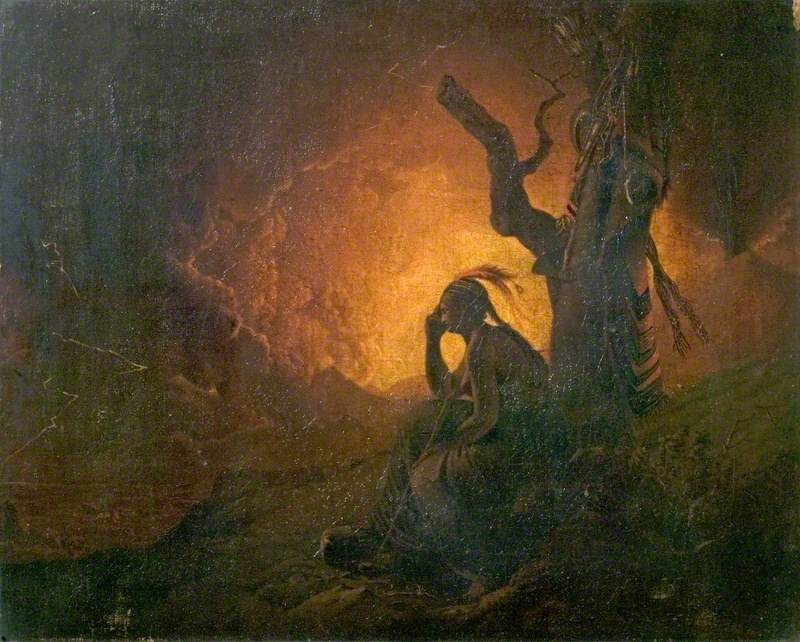
But the exhibition also featured views of the volcanoes, grottoes, and rocky shorelines of southern Italy and the tors and crag-lined rivers of Derbyshire shown alongside each other, making comparisons between the 'classic ground' of the Grand Tour and the caves and rugged peaks of his native county.
Vesuvius in Eruption, with a View over the Islands in the Bay of Naples
c.1776–80
Joseph Wright of Derby (1734–1797) 
Late in life, Wright was increasingly (in his own words) 'stealing off, & getting to Landscapes'. Views in Dovedale and along the Derwent, moonlit nocturnes among them, featuring ancient and modern landmarks, such as Dale Abbey and Arkwright's cotton mill, proved good sellers.
Views of woodland cottages engulfed in flames, their occupiers left in distress and homeless, were popular too. These pictures take elements of the earlier forge scenes – the architectural ruins, fire, and figure groups – and disperse them across the picture plane.
They deal in some of the abiding concerns – the states of ruination and tragedy, man and nature, light and dark – that characterised Wright's 'variety'.
John Bonehill, lecturer in History of Art at the University of Glasgow
This content was supported by Freelands Foundation as part of The Superpower of Looking
Discover our learning resource on Joseph Wright of Derby's An Experiment on a Bird in the Air Pump
